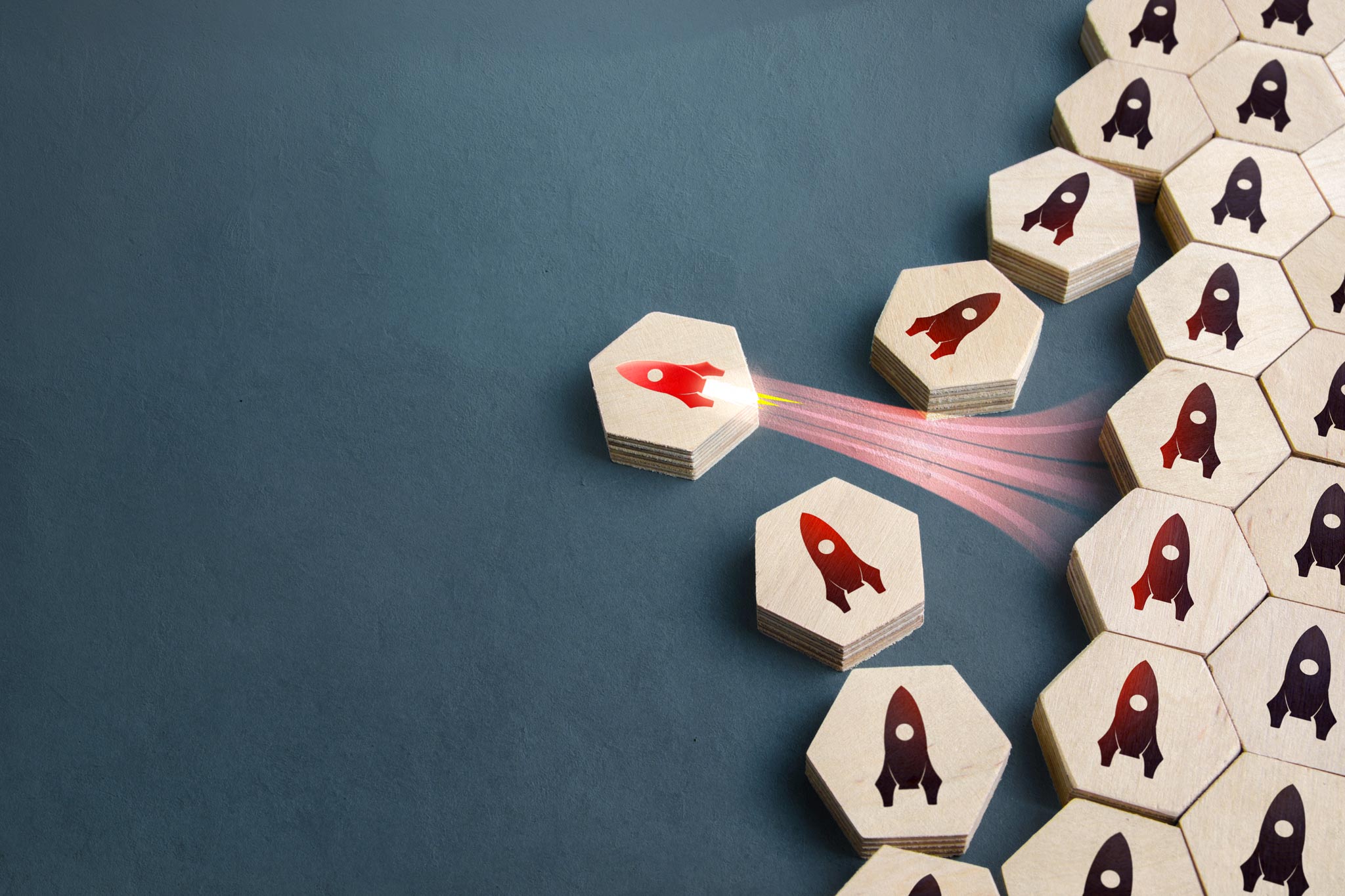What capabilities are critical for meetings industry leaders in a fast-changing and uncertain world?
Stepping up to possibility Across the meetings sector globally, many leaders have begun to smile again as the post-pandemic recovery in event numbers, attendances, and revenues continues to gather pace.
Over the last two years, leadership priorities have gradually evolved from securing new business, growing revenues, and improving profitability to a greater focus on innovation and preparing for the future. While this shift is welcomed, there’s also a growing sense both of uncertainty around what the future holds and of the need for ever faster innovation and changes of approach to navigate from ‘now to next’ and lay the foundations for future success.
Ensuring a very human future Many may see this emphasis shift as an easy transition, requiring minor adjustments to current strategies. However, far larger-scale change processes or fundamental transformations are required for others.
Some may believe they are doing enough in terms of evolving event designs, adopting greater flexibility around the use of physical facilities, and employing new pricing approaches. Others are moving faster, adopting artificial intelligence (AI) applications, deeper personalisation, and more widespread and accelerated engagement with Web 3.0, NFTs*, metaverses, and social platforms like Tiktok.
History shows that technology can bring significant benefits. However, systems rarely get used in full, and the benefits often fall short of expectations. For the meetings sector, the core challenge is talent, not technology. In a deep people-centred industry, the not-so-secret sauce for future success requires a continuous mindset change process and more human-centred approaches to innovation and change.
Every organisation will differ in the required mix and scale of change. Still, typically, it draws on a combination of incremental innovation, deeper levels of change, and larger-scale organisational transformation. To achieve such levels of change, leaders must guide the journey and model the desired new behaviours and ways of working. So, what might this evolution in leadership look like in practice?
How can we lift leadership? For leaders everywhere, four core capabilities come to the forefront as critical enablers of the rethinking, redesign, and ultimate reinvention of our businesses. Those critical leadership capabilities are learning at speed, innovation, foresight, and transformational thinking (LIFT). While we are familiar with the individual terms, let’s explore what they mean in a meetings industry context.
1Learning at speed From front-line event planning and delivery through to leadership of growing multi-business entities in the sector, there can be a sense that we’re just too busy to attend courses. Equally, many leaders struggle to invest the effort required to keep up with emerging developments and shifts in the sector and the wider world. However, the scale of change taking place requires us to rethink how we can use our time to learn what we need at speed, and several valuable strategies are emerging to help with this:
- The first strategy is using proven accelerated learning techniques in multiple contexts to absorb new information quickly.
- The second is adopting a learning-led approach to conducting key projects so all involved learn the new information and ideas together.
- Strategy three is embedding the simple continuous individual learning approach of ensuring that we watch two or three relevant 90–120-second videos or listen to short podcasts daily. These can cover developments in the sector, such as using Tiktok to demonstrate how a venue meets its recycling commitments. They can also help build a proper understanding of broader and potentially high-impact changes such as AI and metaverses.
- Strategy four is continuous team learning, making every team member part of our ‘radar’, and spotting potentially relevant changes in the world. The kinds of changes we might ask our team to look out for could include the standout features of events and venues that friends, families, suppliers, and clients have experienced and the new tools, applications, and technologies they use in their personal lives.
- A fifth learning strategy uses the rapidly evolving range of ‘generative AI’ tools like Chat GPT, Bard, and Claude to provide key information and insight quickly. These can provide near instantaneous, condensed format responses on demand. For example: What are the most innovative features of award-winning public conferences worldwide?
These tools offer answers in less than the time it would take to write a description of what we want to know. The superpower of such tools is the ability to change, broaden, and deepen enquiries as the answers emerge. It helps dispel concerns about the time and cost required to do research and the potential risk of misinterpreted or poorly specified requirements.
2Innovation Across sectors, shifts are occurring in how we innovate, with leaders getting more involved in conceptualising, designing, and delivering innovation. Hence, leaders are acquiring both facilitation skills and a toolbox of processes to drive meaningful innovation. Facilitation skills are foundational to most innovation initiatives. These include problem-framing, brainstorming, conflict resolution, managing group discussions, and consensus-building approaches. These can be used with mixed teams ranging from business development to venue maintenance and IT.
The critical difference here is the shift from designing what we internally think is right to putting the user at the centre of solution design, understanding their needs and desires and involving them at different stages of solution development. Key process tools that can be used here include staged approaches for conducting different scales of projects, design thinking, visualising solutions, iterative development, rapid prototyping, and design dashes.
3Foresight A challenge for all of us is ensuring that we are designing for the future, not just solving yesterday’s problems or merely addressing today’s challenges. However, in the journey from issue identification and initiation through to implementation, the world around us has often moved on, rendering the solution outdated even before it’s delivered.
Increasingly, leaders understand the need to look ahead and ‘manage the present from the future.’ It helps ensure decisions are stress-tested against key forces and factors shaping the future and the resulting scenarios that could arise. The starting point here is asking people the assumptions underlying their thinking and testing these against relevant emerging trends, developments, possibilities, and scenarios for the industry and client sector.
Web/generative AI searches on meeting sector trends and scenarios can quickly provide such information. Strategically, using deeper and more structured approaches to horizon scanning and scenario development can provide us with more comprehensive and tailored perspectives to help sense-check strategies, highlight risks and blindspots, and surface potential opportunities.
Key future factors and scenarios might differ dramatically between the global industry outlook and local meetings sector perspectives. Hence, every manager and leader needs some basic training to develop their capacity to use rapid and regular scanning and scenario thinking. To embed this, our approaches to planning projects, developing broader strategies, and operational management must all require leaders and managers to use these approaches routinely.
4Transformational Thinking The elements above, all feed the continuing process of stretching leaders’ mindsets and reframing their thinking.
The pandemic highlighted how changes and disruptions can happen that are uncertain, unknowable, unthinkable, unbelievable, even uncontrollable, and that they can be repeated, albeit in a different form. Indeed, many argue that environmental pressures, global conflict, economic volatility, and technological advances could all have an even more devastating impact on the meetings industry. Hence, the drive for survival, recovery, and growth requires us to unlearn many ‘world views,’ assumptions and approaches that served us well previously.
Preparing to compete in a fast-changing, uncertain future emphasises the need for unlearning and a willingness to let go of the past. A very powerful and liberating tool here is ‘zero-based thinking.’ It means asking: How would we do this if we were starting again? Whilst the ideas may not all be implemented, this is a powerful technique to generate new possibilities ranging from planning a meeting to developing a complete strategy or rethinking the whole business.
Of course, there are many additional components that an excellent leader requires in their toolbox. However, the Lift framework outlined above highlights critical elements that are central to developing the talent that can lead us through emerging uncertainty to a viable and sustainable future.
* NFT is a ‘non-fungible token’ and means something unique that can’t be replaced. By contrast, physical money and cryptocurrencies are fungible, which means they can be traded or exchanged for one another.



